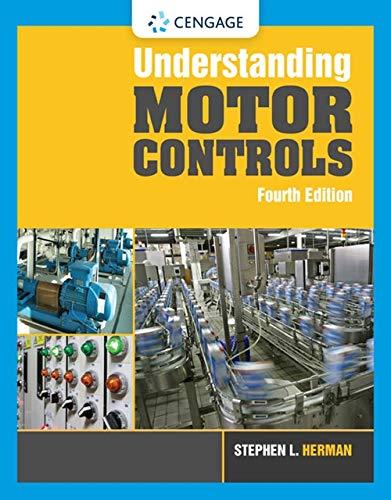AP10.1 A three-axis pick-and-place application requires the precise movement of a robotic arm in three- dimensional space, as shown in Figure AP10.1 for joint 2. The arm has specific linear paths it must follow to avoid other pieces of machinery. The overshoot for a step input should be than 13%. (a) Let Ge(s) K, and determine the gain K that sat- isfies the requirement. Determine the resulting settling time (with a 2% criterion). (b) Use a lead network and reduce the settling time to less than 3 seconds. FIGURE AP10.1 Pick-and-place robot. Motor 4 Motor 1 R(s). Ge(s)
AP10.1 A three-axis pick-and-place application requires the precise movement of a robotic arm in three- dimensional space, as shown in Figure AP10.1 for joint 2. The arm has specific linear paths it must follow to avoid other pieces of machinery. The overshoot for a step input should be than 13%. (a) Let Ge(s) K, and determine the gain K that sat- isfies the requirement. Determine the resulting settling time (with a 2% criterion). (b) Use a lead network and reduce the settling time to less than 3 seconds. FIGURE AP10.1 Pick-and-place robot. Motor 4 Motor 1 R(s). Ge(s)
Principles of Heat Transfer (Activate Learning with these NEW titles from Engineering!)
8th Edition
ISBN:9781305387102
Author:Kreith, Frank; Manglik, Raj M.
Publisher:Kreith, Frank; Manglik, Raj M.
Chapter4: Numerical Analysis Of Heat Conduction
Section: Chapter Questions
Problem 4.6P
Related questions
Question
Can you also please do the simulate the step response in MATLAB for the design and report achieved PO and settling time? Thank you.

Transcribed Image Text:AP10.1 A three-axis pick-and-place application requires
the precise movement of a robotic arm in three-
dimensional space, as shown in Figure AP10.1 for joint
2. The arm has specific linear paths it must follow to
avoid other pieces of machinery. The overshoot for a
step input ould less than 13%.
(a) Let Ge(s) = K, and determine the gain K that sat-
isfies the requirement. Determine the resulting settling
time (with a 2% criterion). (b) Use a lead network and
reduce the settling time to less than 3 seconds.
FIGURE AP10.1
Pick-and-place
robot.
Motor 4
Motor 1
R(s).
Ge(s)
(a)
(b)
Motor 2
Motor 3
1
s(s + 1)(s + 4)
Y(s)
Expert Solution
This question has been solved!
Explore an expertly crafted, step-by-step solution for a thorough understanding of key concepts.
This is a popular solution!
Trending now
This is a popular solution!
Step by step
Solved in 7 steps with 6 images

Recommended textbooks for you

Principles of Heat Transfer (Activate Learning wi…
Mechanical Engineering
ISBN:
9781305387102
Author:
Kreith, Frank; Manglik, Raj M.
Publisher:
Cengage Learning

Understanding Motor Controls
Mechanical Engineering
ISBN:
9781337798686
Author:
Stephen L. Herman
Publisher:
Delmar Cengage Learning

Principles of Heat Transfer (Activate Learning wi…
Mechanical Engineering
ISBN:
9781305387102
Author:
Kreith, Frank; Manglik, Raj M.
Publisher:
Cengage Learning

Understanding Motor Controls
Mechanical Engineering
ISBN:
9781337798686
Author:
Stephen L. Herman
Publisher:
Delmar Cengage Learning